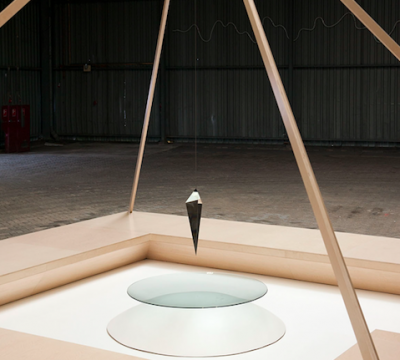winnie teschmacher
Winnie Teschmacher (Rotterdam, 1958) started experimenting with the possibilities of glass in 1983, blowing it, bending it and grinding it. In doing so, she experienced how, rather than working with matter, she was working with light and space. ‘Distortions and reflections enable us to see the glass. A lens or piece of glass allows us to become aware that we do not see objects around us, but light. Our eyes are sensitive to light, not to objects. Seeing matter, therefore, is an illusion, seeing light is a reality.’
Alongside glass, she has begun to introduce the use of metal, wood and photographic images in her objects. Her new work reveals a great fascination for silence and light.
Winnie Teschmacher is autodidactic. Since 2008, she has, alongside her work as an artist, also been initiator and director of De Ketelfactory in Schiedam. Her work has bee displayed in, among other places, The Hague, Amsterdam, Coesfeld (Germany) and Chicago (USA).
Thoughts slow down
As a great lover of books, I must now advise you urgently to stop reading. You mustn’t take the time to read this story, not if you have just sat down on one of the wooden ledges that are part of Winnie Teschmacher’s work Space of Silence. I shall therefore write this story partially in the past tense — because that is how it is intended: read it after you have feasted upon Teschmacher’s work.
Space of Silence exists thanks to the painstaking effort Winnie Teschmacher (1958) put into the work. What did you see, when you just sat in the wooden box of 7,5 metres in length and 7,5 metres in width? What did you experience when you looked up, your eyes tracing the four ribs of a wooden frame, uniting into one point at a hight of 4,7 metres? What did you feel, being part of that pyramid shaped construction and looking at the pendulum of optical glass dropping down from the tip of the pyramid, precisely tracing the beam of light entering through the skylight in the roof of the Noletloodsen? Did you feel serenity? Silence? A sigh of relief? Did you sense how your everyday cares fell from you? Did you feel these things because you subconsciously experienced the perfection to which the shapes in this construction are attuned and how profoundly the glass pendulum relates to the glass plate below it? And honestly: were you still aware of everything else going on in the Noletloodsen?
Space of Silence is a characteristic work for glass artist Teschmacher. Even when she was studying Sculpture in the early eighties at what was then called the Rotterdamse Academie voor Beeldende Vorming, she had already begun working with glass. Impetuously, really, without any noteworthy knowledge, she had thrown herself at a métier she singlehandedly mastered. Glass became the tool in her search for silence. She gained national and international success with it.
In Space of Silence, Teschmacher has chosen to work with optical glass, normally used to create lenses. The advantage of optical glass — which requires an incredible amount of precision and hours of grinding — is that it lacks any imperfections. Optical glass has the exact same fraction of light all over. There’s not a bubble, not a blemish, not a crack to be found.
Teschmacher’s glass sculptures are often conical in shape, with a matte and a clear side. One might view them as purely aesthetic art objects. But besides that, they function as a medium for the practice of silence. They draw your eye into an infinite depth, which is simultaneously a surface: the sculpture ‘reflects’ your eye back into your mind, your heart.
Space of Silence possesses the same ambiguity that the highly sensitive poet Rutger Kopland, who sadly passed away in 2012, demonstrated in his poems. Space of Silence, to quote Kopland, ‘speaks of the depth we call heaven’.
De glass pendulum and glass plate hang and lie inside the frame of a pyramid which is, in terms of measurements, based on the pyramid of Cheops. This Wonder of the Ancient World — one of seven — was built an unimaginable number of centuries ago, between 2551 and 2472 BC. But still, all those that enter the pyramid in Gizeh, will be struck by the spiritual force of the place and the perfect measurements of the building, which trace back to the movements of the stars in the sky.
Teschmacher does not aim to evoke anecdote, no narrative or association. She wants peace, concentration, silence. The eyes must ‘come to a halt’ here, as she so beautifully puts it. Thoughts must slow down and eventually come to a standstill. A single scratch on her works of glass and the magic evaporates. A single thought and the spell is broken. So look very carefully.


